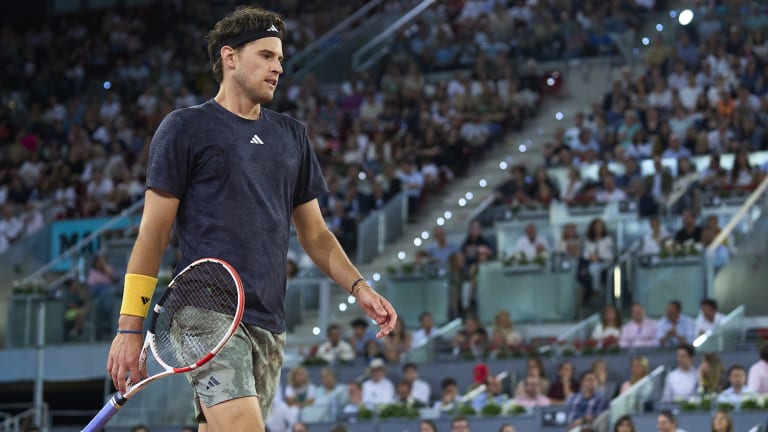Tennis.com Interview
Nearing 30, Dominic Thiem thinks "of a life beyond tennis," but the clay-court star isn't slowing down
By May 08, 2023Tennis.com Interview
Patrick Kypson, former college teammate of Rinderknech and Vacherot, is writing his own perseverance story
By Oct 28, 2025Tennis.com Interview
Michael Zheng channels Ivy League balancing act into rapidly blossoming pro tennis future
By Oct 21, 2025Tennis.com Interview
Flavio Cobolli wants to earn Davis Cup Finals nomination—and stay on as ATP's 'admin'
By Oct 16, 2025Tennis.com Interview
With IMG Academy backing, Wakana Sonobe kicks off pro career at home in Osaka
By Oct 16, 2025Tennis.com Interview
Alex Michelsen wins Almaty debut to end losing skid, reveals coaching trial with Kristof Vliegen
By Oct 15, 2025Tennis.com Interview
“It’s a daily battle”: Donna Vekic looks for motivation after Olympic breakthrough
By Oct 06, 2025Tennis.com Interview
After "reality check," Ethan Quinn starts to meet his expectations
By Sep 27, 2025Tennis.com Interview
US Open semifinalists Robert Cash and JJ Tracy take their momentum on the road
By Sep 15, 2025Tennis.com Interview
Jenson Brooksby, the outlier, returns ... again
By Sep 14, 2025Nearing 30, Dominic Thiem thinks "of a life beyond tennis," but the clay-court star isn't slowing down
Might the Austrian at last be healthy enough to charge back up the rankings?
Published May 08, 2023
Advertising
Advertising
Advertising

Thiem has opted to play two ATP Challenger Tour events, in Austria and France, over the next two weeks, as opposed to the Master 1000 tournament in Rome.
© 2023 Quality Sport Images